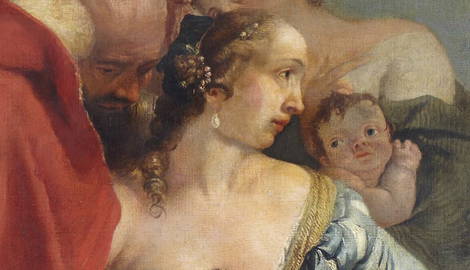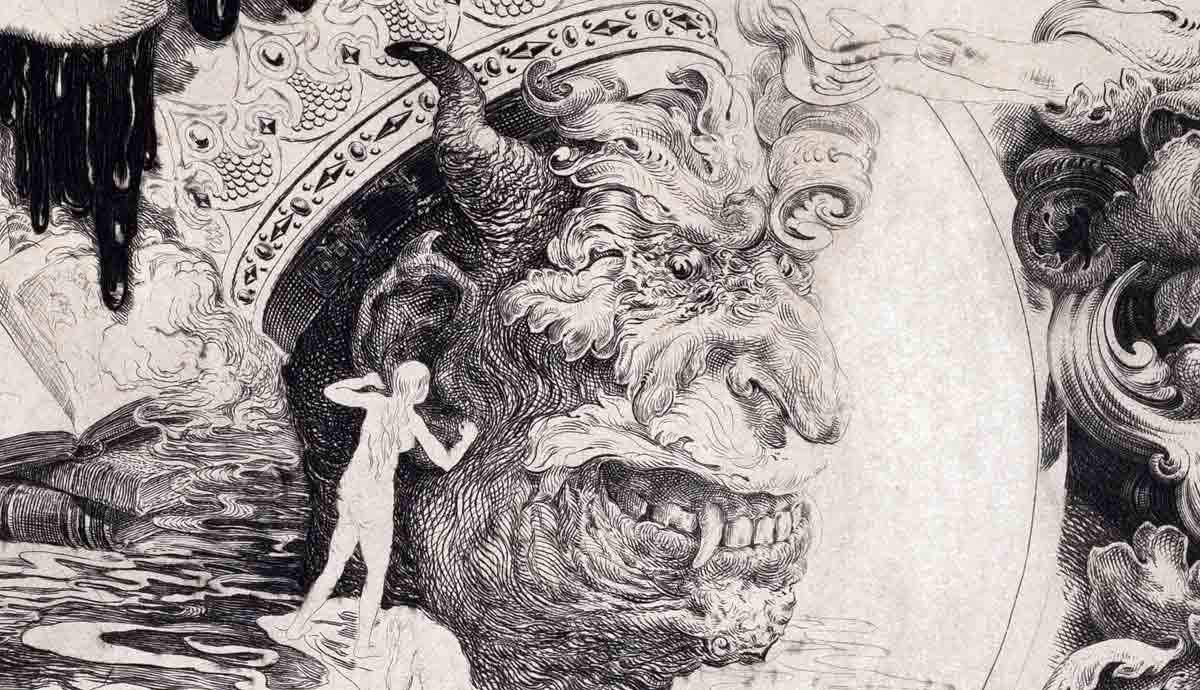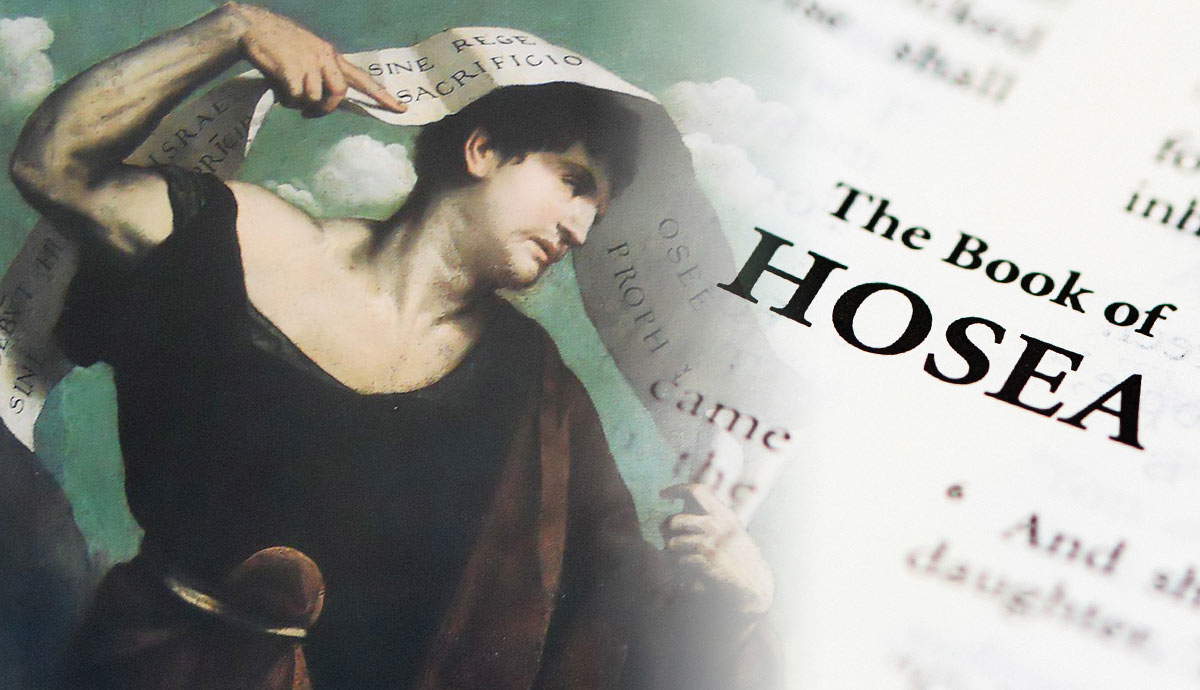
In the biblical book of Second Samuel, God gives the recently crowned King David a promise via the Prophet Nathan: David’s dynasty would never end. There would never cease to be a king in David’s line sitting on this throne. But in a dramatic incident several generations later, the survival of David’s royal line came to depend on a single baby boy whose grandmother Athaliah apparently tried to murder. Israel’s only sole-ruling queen almost thwarted David’s promise. But why would she do that?
The Princess from the North

The reigns of David and his son Solomon fall into the period of ancient Israelite history known as the “United Monarchy.” The period’s name is meant to contrast it with the following era, inaugurated by Solomon’s son Rehoboam, during whose reign the Kingdom of Israel split permanently into two. David’s dynasty continued in the southern of these two kingdoms, which was called Judah after the tribe to which he belonged. The northern kingdom was called simply Israel, since it was comprised of most of Israel’s original twelve tribes.
Athaliah was a princess of a royal family in this northern kingdom. Unlike in the South, where David’s dynasty continued throughout Judah’s history, rebellions and assassinations characterized the monarchy in the North. Athaliah’s own grandfather Omri, in fact, had risen to Israel’s throne after two successive, violent rebellions. One imagines that this environment affected Athaliah’s perception of how monarchy’s function and survive.
Jehu’s Rise to Power

The kings of the northern kingdom are consistently criticized in the biblical narratives. But among the worst of them all is Ahab, Athaliah’s father, whose infamy is matched by Athaliah’s devious mother Jezebel. As a punishment for Ahab and Jezebel’s murder of a farmer named Naboth and his family, the Prophet Elijah predicts that Ahab’s throne would be forcibly taken from his descendants. When Ahab later dies of a battle wound, his son Joram takes the throne, while Jezebel survives, and the reader awaits Elijah’s prophecy to meet its fulfillment.
It fell to Elijah’s protégé Elisha to commission the anointing, as biblical prophets were wont to do, of a successor to Israel’s throne from outside the reigning royal family. The man’s name was Jehu, a brutal warrior known for his wild charioteering and uncanny skill as an archer.
Between Two Kingdoms

Five years after Joram was enthroned at Samaria, Jehoram became king in Judah. The timing is not given in the text, but we are told that Jehoram had married Athaliah, which meant that the royal families of the southern and northern kingdoms were allied. This meant that, technically, Athaliah could have produced a male heir to both thrones!
Athaliah survived her husband’s death, and their son Ahaziah took the throne while Joram continued as king in Samaria. But while Athaliah is “safe” in the palace in Jerusalem, her son Ahaziah went to visit King Joram in the North. These two kings, now part of the same extended family, had formed a military alliance in Israel’s war against Syria, in which they had met with success. But the peace to was doomed to a short life, for as Ahaziah recovered from a battle wound in Joram’s house, Jehu was preparing to stage his coup d’état.
Jehu’s Massacre and Coup D’état

After Jehu is anointed king, the narrative slows and Jehu’s systematic takeover is related scene by bloody scene. Mounted on his chariot, Jehu puts both Joram and Ahaziah to flight. He shoots an arrow into Joram’s back and then commands his companions to do the same to Ahaziah. He then proceeds to the palace, where he orders Jezebel to be thrown to her death from a window. Thus, in a single day, Jehu assassinated both Athaliah’s son and brother, as well as her mother—and emptied the thrones of both Judah and Israel.
Any hope of a future reuniting of the two kingdoms was eliminated. But David’s promise itself was also to be put in jeopardy.
Narrative in the Hebrew Bible is concise, offering only occasional insight into the reasoning of its characters. Without explaining her motives, readers are told is that Athaliah responded to the news of her family’s destruction by trying to eradicate the royal family in Judah.
Athaliah’s Rise and Fall

Athaliah’s massacre of her own family in Judah is as puzzling as it is horrific. A dynasty is the legacy every monarch covets. Yet according to the story, Athaliah’s blood-thirsty rampage would have extended to her own grandson, the late Ahaziah’s son Joash. If Athaliah indeed killed the entire royal family as the text says, the baby Joash was the only hope of keeping the Davidic promise alive because he was the only male surviving in David’s line. But even if Athaliah did not care about the Davidic promise, it would still be odd for her to disregard her own royal line.
Athaliah’s plans are thwarted when, in concert with the Temple priest Jehoiada, Athaliah’s daughter (or step-daughter) Jehosheba hides Joash away for six years.
At the right moment, and with great fanfare, Johoida anoints the seven-year-old Joash king, publicly supplanting of Athaliah. Athaliah is led screaming “Treason! Treason!” to the entrance of her palace, where she is executed.
Unanswered Questions

Athaliah’s story leaves tantalizing questions unanswered. For example, Jehosheba is called both the sister of Ahaziah (Athaliah’s son) and the daughter of Jehoram (Athaliah’s husband). Yet, Jehosheba is never called Athaliah’s daughter. Athaliah’s connection to her mother Jezebel clearly works against her image in the story. Is the narrator trying to obscure their mother-daughter relationship?
How did Jehosheba survive Athaliah’s rampage? Why would Athaliah have wanted to eliminate her only hope of a dynasty? Having heard that her family had been killed in the North, did she fear for her life? Or, was she simply trying to seize power? If her rulership was spurious, how did she successfully manage to keep the throne for six years?
On the surface, Athaliah is presented as a villain in her story. But some readers will not be content with so facile a label. There is something going on below the surface of Athaliah’s story that, perhaps, only a hearty imagination can see.






